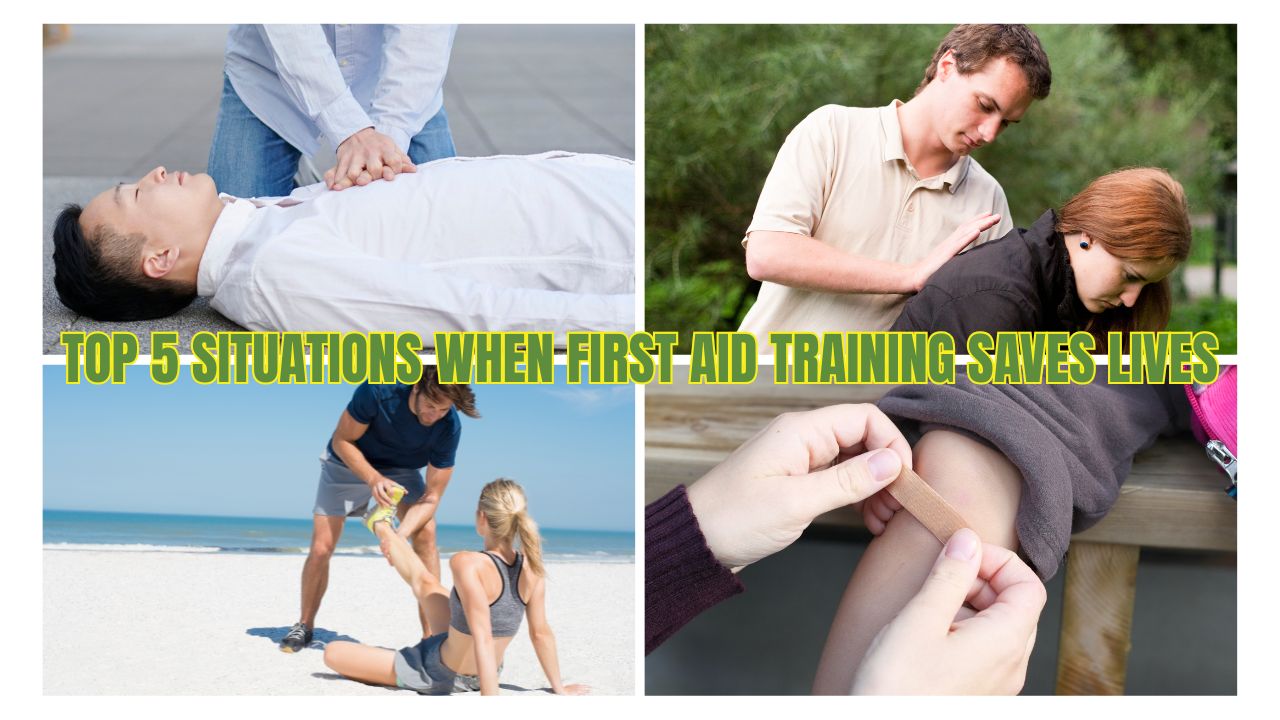Top 5 Situations When First Aid Training Saves Lives

Emergencies don’t send a warning. They happen in everyday places—homes, schools, care centres—and often when least expected. One moment everything’s fine. The next, someone’s choking, collapsed, or burned. That’s why first aid training is so important, especially for those working in aged care and disability support.
For carers, it’s not just about kindness. It’s part of the job. Legally and ethically, you’re expected to respond quickly and correctly when someone’s in trouble. And sometimes, what you do in those first few minutes can decide whether someone recovers—or doesn’t.
Let’s take a look at five situations where basic first aid really can save lives.
1. When Seconds Count: Emergencies Where First Aid Matters
Heart Attacks and Cardiac Arrests
In aged care settings, heart attacks and cardiac arrests are sadly not uncommon. And when someone’s heart stops, every minute counts. CPR performed quickly can double—or even triple—the chances of survival. Over 20,000 Australians experience a cardiac arrest outside hospital each year. (Monash University) First aid training teaches you how to step in fast, stay calm, and do what’s needed before help arrives.
Choking Incidents
Aged care workers and disability carers know how easily choking can happen—during meals, medications, even a laugh at the wrong time. Being trained means you’ll know how to spot it quickly and respond properly, without panic. A friend who works in aged care told me she had to clear a blocked airway once using the back blows she learned in training. “It kicked in straight away,” she said. “I didn’t even stop to think.”
Seizures and Epilepsy
Watching someone have a seizure can be frightening if you’re not prepared. First aid training covers how to protect the person from injury and when to call for help. Many carers in disability support encounter epilepsy regularly. Training takes away that fear and helps you act with confidence.
Falls and Fractures
Falls are one of the most common injuries in aged care and among people with mobility challenges. A bad fall can lead to broken bones, bleeding, or head injuries. Knowing how to stabilise the person, stop bleeding, or spot signs of shock can prevent the situation from getting worse. First aid can also teach you how to comfort someone in pain, which is just as important.
Burns and Allergic Reactions
From kitchen mishaps to unexpected allergic responses, these situations can turn serious fast. Around 50,000 Australians are hospitalised each year due to burns. (AIHW) And allergic reactions? They can go from mild to life-threatening in minutes. First aid helps you recognise signs of anaphylaxis and use an EpiPen or manage burns the right way.
2. What You Actually Learn in a First Aid Course
Let’s clear something up—it’s not all CPR dummies and bandages.
Here’s a look at what most first aid courses actually teach:
- How to respond to an emergency situation
- CPR for adults, children, and babies
- Using an AED (defibrillator) safely and correctly
- Treating wounds and bleeding
- Managing shock and fainting
- What to do in a drowning situation
- Dealing with burns, bites, and stings
- How to support someone through a seizure or asthma attack
It’s hands-on, clear, and surprisingly practical. Many students walk away saying they feel far more confident not just in care settings, but at home, out shopping, or even just driving to work.
One area that often gets overlooked is road crashes. While first aid courses don’t focus on car accidents specifically, they do give you the tools to handle what usually happens in those scenarios—broken bones, bleeding, shock, and trauma. With nearly 40,000 people hospitalised after car crashes each year in Australia, (AIHW) being prepared isn’t just a bonus—it’s essential.
3. Why It’s Required in the Care Industry
If you work in aged care, disability support, or childcare, you’re expected to hold a valid first aid certificate. It’s not just recommended—it’s part of staying compliant.
Here’s what the law expects:
- First aid certification is mandatory for support workers in most care settings.
- Your certificate is valid for three years, but CPR must be refreshed annually.
- Most employers won’t let you work on-site without proof of training.
Even if you don’t work in health or care, having first aid skills makes you a valuable person to have around—at work, school, or family gatherings. Employers notice it. Parents respect it. Friends appreciate it.
And if you’re self-employed under the NDIS? You still need it. Clients and coordinators expect support workers to have up-to-date certification—and frankly, you’ll feel more prepared with it.
Be Ready When It Counts
There’s one thing every emergency has in common: someone wishes they knew what to do.
That doesn’t have to be you.
First aid training gives you the power to act when others freeze. It’s not hard to learn, and it only takes a day to get certified. But the confidence? That sticks with you.
Whether you’re a support worker, a parent, or just someone who wants to be useful in a crisis, learning first aid makes sense. It’s one of those life skills that truly lives up to the name.
👉 Be prepared to save a life.
Enrol in our accredited First Aid course today and get certified in just one day.






